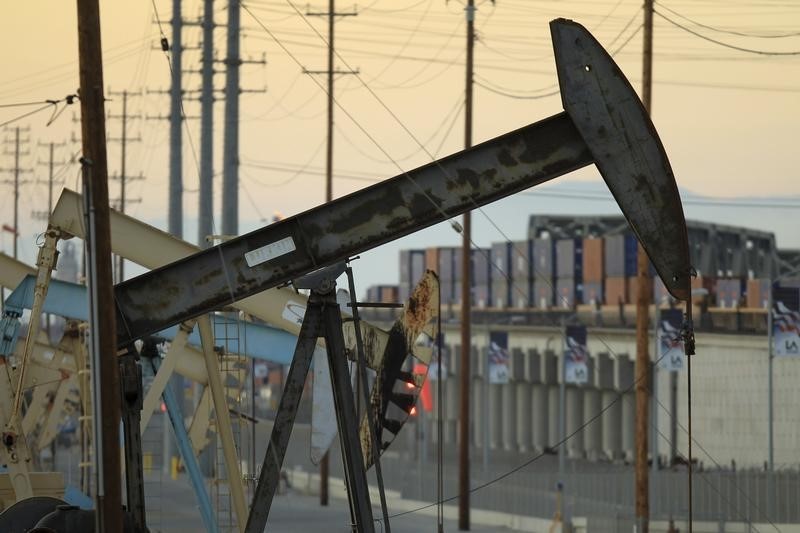By Arathy Somasekhar
HOUSTON (Reuters) -Oil prices fell 1% on Tuesday, extending losses from Monday, on rising production and hopes for a ceasefire between Israel and Hamas.
June futures, which expired Tuesday, fell 54 cents, or 0.6%, to $87.86 a barrel. The more active July contract fell 87 cents to $86.33.
U.S. West Texas Intermediate crude futures fell 70 cents, or 0.9%, to $81.93.
The front-month contract for both benchmarks lost more than 1% on Monday.
U.S. crude oil production rose to 13.15 million barrels per day in February from 12.58 million barrels per day in January, the largest monthly increase since October 2021, the Energy Information Administration said. Meanwhile, exports rose to 4.66 million barrels per day from 4.05 million barrels per day in the same period.
U.S. crude inventories rose by 4.91 million barrels in the week ended April 26, according to market sources citing figures from the American Petroleum Institute on Tuesday. Stocks were expected to fall by about 1.1 million barrels last week, a wide-ranging Reuters poll showed on Tuesday. Official data from the EIA will be released on Wednesday morning.
Gasoline inventories fell by 1.483 million barrels, and distillates fell by 2.187 million barrels.
Expectations that a ceasefire deal between Israel and Hamas could be in sight have grown in recent days following a renewed effort led by Egypt to revive stalled negotiations between the two.
However, Israeli Prime Minister Benjamin Netanyahu vowed Tuesday to press ahead with a long-promised attack on the southern Gaza city of Rafah.
Remove ads
.
“Traders believe that some of the geopolitical risk is being taken out of the market,” said Dennis Kissler, senior vice president of trading at BOK Financial.
“We don’t see any global supply being taken off the market.”
Continued attacks by Yemen’s Houthis on maritime traffic south of the Suez Canal – a key trade route – have put a floor on oil prices and could trigger higher risk premia if the market expects disruptions to crude oil supplies.
Investors were also watching a two-day monetary policy meeting of the Federal Reserve Open Market Committee (FOMC), which meets on Tuesday.
According to the CME’s FedWatch Tool, the FOMC is almost certain to leave rates unchanged at the end of Wednesday’s meeting.
“The upcoming Fed meeting is also leading to some reserves in the short term,” said Yeap Jun Rong, market strategist at IG, adding that an extended period of high interest rates could trigger further dollar appreciation while weakening the outlook for the could threaten oil demand.
Some investors are cautiously pricing in a greater likelihood that the Fed will raise rates by a quarter of a percentage point this year and next, as inflation and the labor market remain resilient.
U.S. product supply of crude oil and petroleum products, the EIA’s measure of consumption, rose 1.9% in February to 19.95 million barrels per day.
However, concerns about demand have increased as diesel prices have weakened.
Balancing the market caused the Organization of the Petroleum Exporting Countries to drop output in April, a Reuters survey shows. This reflects lower exports from Iran, Iraq and Nigeria against the backdrop of continued voluntary supply cuts by some members agreed to by the broader OPEC+ alliance.
Remove ads
.
A Reuters poll showed oil prices could remain above $80 a barrel this year, with analysts upgrading their forecasts on expectations that supply will lag demand in light of conflict in the Central East and production cuts by the OPEC+ producer group. [O/POLL]


